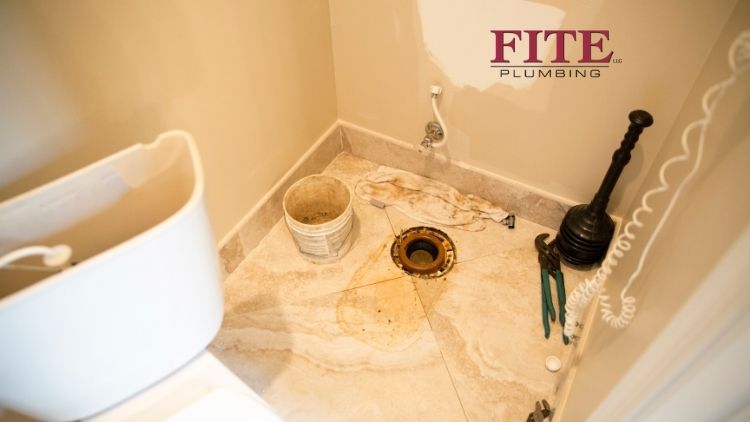The toilet is one of the most important fixtures in your home. Toilets are sturdy and often outlast your other bathroom fixtures, but they do eventually need replacement. After a decade, heavy lime deposits can build up and lead to clogging or slow flushing. The seals between the tank and the bowl can harden, crack, and begin to leak.
Sometimes homeowners just want to upgrade to a newer model with the latest technology and a different look. Some owners don’t hesitate. They call a professional plumber. Others may want to take things into their own hands and accept the challenge.
Replacing a toilet is an unpleasant task. Toilets are heavy and unwieldly, and no one really enjoys getting up close and personal with the toilet. The process though, is not technically difficult. Do you plan to replace the toilet yourself? If so, here are some tips to help you out!
Clear Out the Water
Before replacing the toilet, shut off the water supply valve to the tank and flush the toilet. Hold the handle down and drain as much water as you can from the tank. You can use a plunger to force as much water as possible. Some water will still remain in the bowl, and you will want to scoop it out with a cup. You can also use a sponge to soak up the water. Any water left behind will usually end up on your floor, so get it out ahead of time.
Clear a Spot for the Toilet
Before you attempt to remove the toilet, be sure you have a space that you can place it. You will inevitably have water from the internal P-Trap, so often professionals will place the toilet on a tray on a wheeled dolly. This allows it to keep your house dry and makes the fixture easy to move out afterward.
Remove the Old Toilet Hardware
You will need to pop the caps from the base of the bowl and remove the nuts. Use an open-ended wrench to do this. If the nuts are old and rusty you may need to use pliers to grip the bolt and hold it still. You may even need to break off a rusted nut.
Remove the Tank Lid
Remember that the tank’s lid is not attached to the toilet. When you lift the toilet, it is likely to slide off. It is heavy and will hurt you, damage your floor, or break. Remove it first. This also relieves a bit of the weight!
Watch Your Back
Toilets are heavy, awkward, and fragile. Before lifting one, you will likely want gloves and you need to remember safe lifting rules like using your legs and keeping your back straight.
Clog the Drain
You will want to prevent sewer gases from entering the bathroom so be sure to block the drain opening after removing the fixture. An old rag will do the trick.
Wax Ring
Before installing a new toilet, you should completely remove the old wax ring and place a new one. Carefully lower the new fixture centered over the new wax ring. Gently push down and rock it side to side until the toilet rests solidly on the floor. Ensure it is parallel to the floor. Use a level to ensure the it sits properly and if necessary, you can use plastic or stainless-steel shims to adjust.
Toilet Alignment
Placing the new toilet in the correct position is essential. You do not want to damage the wax ring by moving and removing the fixture. Look for the holes in the bottom of the toilet and be sure they are aligned directly with the flange bolts.
Nuts & Bolts
Use new nuts, bolts, and washers for the new toilet. Be sure not to over-tighten the nuts on the bolts. The washers and nuts should be placed on the bolts and be snugged down but not too tight. Finger tightening is typically enough. Making them too tight can damage the porcelain or even chip or break it into pieces. Once you fill the tank, check for leaks. If there is leaking, tighten them just a little more, just enough to stop the drips.
Replacing a toilet is not a technically difficult task. Use these tips to help you with your toilet DIY. Better yet, leave it to the professionals and give us a call at Fite Plumbing at (317) 271-5400 and we can help.
Are you on Facebook? We are, too. Let’s be friends!


